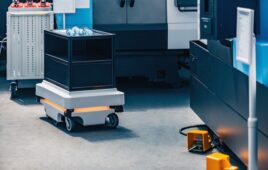Nanyang Technological University (NTU) has built Singapore’s first tidal turbine system to test the viability of tapping tidal energy to generate electricity here.
The new tidal turbine test bed, set up in collaboration with the Sentosa Development Corporation (SDC), was designed, built and installed by NTU engineers from the Energy Research Institute at NTU.
Tidal energy is a completely new field in Singapore. Its key advantage as a renewable energy source is that tidal cycles are predictable, unlike conventional wind and solar energy, which are highly susceptible to weather fluctuations.
The NTU tidal turbine system consists of two low-flow turbines mounted on the test bed, optimised for local conditions. Compared to typical turbines, these specially designed prototypes are able to work at higher efficiency despite low water speeds, similar to those found in Singapore’s waters.
This new test bed is expected to open up new research avenues for renewable energy, especially for resource-scarce countries such as Singapore. The research data gathered will allow NTU to develop more innovative turbine concepts to cater to Singapore’s environment and beyond.
In the next year of operation, the tidal energy test bed will demonstrate how low-flow tidal energy can be harnessed efficiently, and made cheaper and more reliable. The energy produced by the test bed is used to also power the lights at the Sentosa Boardwalk Turbine Exhibit. Open to the public, the informative exhibition which is part of the Sentosa Sustainability Plan, will have information about tidal energy and showcases a miniature tidal turbine prototype.
Mr Mike Barclay, Chief Executive Officer of SDC, said: “Sentosa is deeply committed to promoting sustainable tourism. One key aspect of our commitment is to open up Sentosa as a test-bed for new green initiatives and technologies, particularly those that can be scaled up for wider adoption across Singapore. This collaboration with NTU has been an exciting project, as it has demonstrated the potential of tidal flow as an alternative energy source.”
Professor Subodh Mhaisalkar, Executive Director of ERI@N, said investment in such emerging technologies is a demonstration of Singapore’s commitment to explore renewable energy options, much like how the country has developed its renowned expertise in water technologies.
“Apart from proving that tidal energy is feasible in Singapore, the test bed will also provide important research data on how the turbine handles local low-flow currents and the tropical marine environment,” Prof Mhaisalkar said. “More importantly, the data will allow us to improve our designs for future turbine systems, leading to new avenues of renewable energy in resource-scarce countries such as Singapore.”
The two turbines installed at the test bed extracts energy from tidal currents to generate up to a thousand watts of energy per hour combined, which could power about 70 fluorescent light bulbs (15 watts per bulb) typically found in households.
The Sentosa Boardwalk is an ideal location for a tidal power test bed, as it has high tidal currents several locations near the Boardwalk, due to concrete pillars at the adjacent bridge which funnel water into a narrow channel and amplifies water speed.
This scalable test bed at Sentosa allows for the installation of multiple turbines and will be used by NTU to assess newer and more innovative turbine concepts.
Filed Under: Industrial automation




